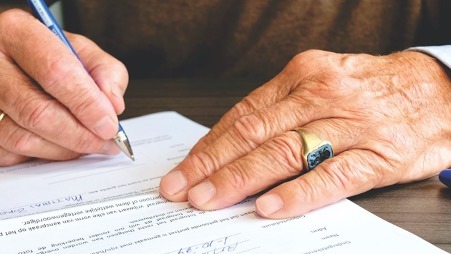
A deposit slip, if you’re not familiar with the term, is a small paper slip that you, as a customer, include when you visit a bank and make a deposit of funds into a bank account. The slip is proof you made the deposit. The bank uses these slips to keep a record of all the deposits made that day and to make sure no deposits are unaccounted for at the end of the business day.
Below is a look at how to fill out a deposit slip and what can go wrong if you do so incorrectly.
Best Practices for Filling Out a Deposit Slip
Filling out a deposit slip is easy, but the process will vary depending on what you’re doing. Cash and checks go in different sections, for instance, and getting cash back from the deposit will call for an extra step. Here’s a quick rundown of how to fill in your next deposit slip:
- Provide Your Personal Information
Write your name and your account number on the slip. This will already have been done for you if you have pre-printed deposit slips from the back of your check book.
- Fill in the Additional Details
Add in the date and, if the slip requires it, any branch information.
- List the Deposit Cash Amount
This is the total amount of currency for the deposit in bills and coins. Leave the line blank if you don’t have any cash for the deposit.
- List Each Check Individually
Write in the check number and how much check is worth separately. Leave the line blank if you’re not depositing any checks and move on to the subtotal line.
- Add Up All the Deposits for a Subtotal
Self-explanatory, but this is the amount of cash and checks you have to deposit.
- Enter How Much Cash You’d Like to Withdraw
Do you want cash back from your deposit? Then add in this step. If your entire deposit comprises checks, you might decide to withdraw some cash now so that you don’t have to do so later.
- Calculate the Total Deposit
This is the total of your deposits minus any cash you’ve withdrawn.
- Sign the Slip
If you’re getting cash back from the deposit, you’ll have to sign the slip
What Happens if You Fill in Your Deposit Slip Incorrectly?
Of course, you want to get the details right first time. If you don’t the deposit can go to someone else’s account. As a result, your own bank balance will be lower than it should be. Sooner or later, however, the bank will reverse the transaction and redirect the money to the correct account.
You should review your check book regularly to reconcile your record of transactions with your bank statements. This can help you spot errors and to realize whether you might not have filled out a deposit slip incorrectly if a deposit doesn’t show up in your account.
Keep an eye on your bank statements, too. If there are any errors, your bank would expect you to notify it within 60 days.
If Money Goes Missing
If you notice money missing and notify your bank, the bank has 10 business days to investigate. It should deposit the full amount in your account minus $50 or less if it doesn’t complete its investigation in that time. The bank then has 45 days to investigate further (or 90 if the transaction took place in a foreign country or within 30 days of you opening the account). The bank must inform you in writing, before taking back the provisional credit to your account, if it finds there’s no error on its part.
Deposit slips can help banks and customers record deposits. If there are any disputes, the slip proves a deposit has been made and can resolve the issue much more easily.


































